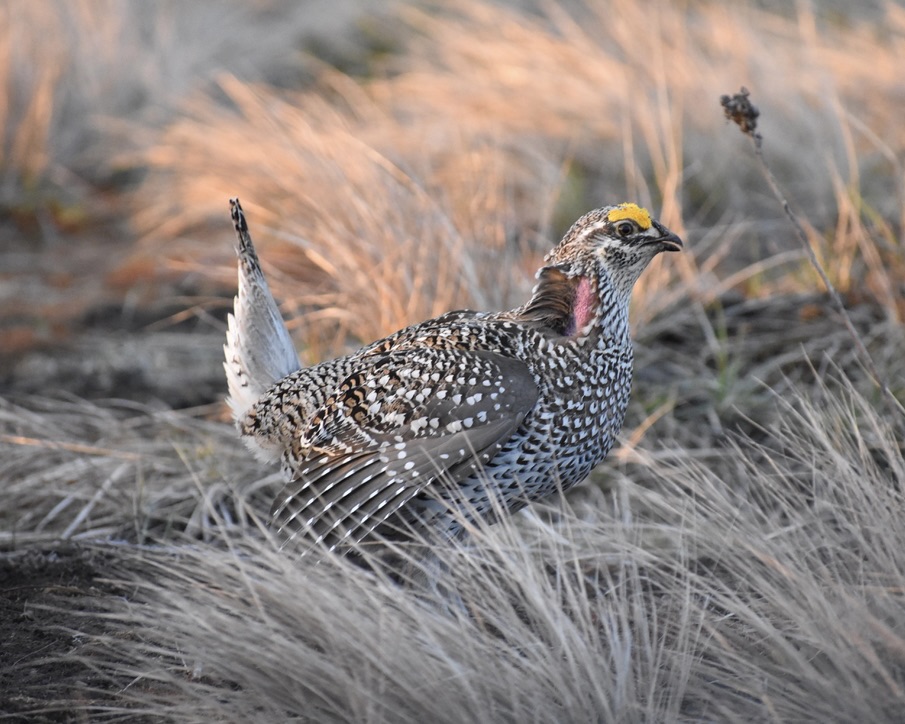Estimating Remaining Genetic Diversity in Columbian Sharp-tailed Grouse to Inform Next Steps in Conservation

- Stephanie Galla , Boise State University, stephaniegalla@boisestate.edu
- Morgan Calahan, Boise State University, morgancalahan@u.boisestate.edu
Principal Investigator
Researcher
The Columbian Sharp-tailed Grouse (hereafter, CSTG), is a subspecies of cultural significance in western North America as a traditional food source for Indigenous Peoples and local hunters. CSTG are known for their unique lekking, or courtship behavior, where the males congregate in the spring to participate in a courtship display where they dance, flaunt bright purple air sacks and yellow eye combs, and produce a cacophony of vocalizations to attract females. They live in the shrub steppe, a semi-arid ecosystem that is vulnerable to human-caused change and climate impacts including fragmentation, and compounding cycles of exotic grass invasion, drought and intensified wildfire. As a result, CSTG have experienced significant decline coinciding with habitat loss across their range.
Populations that have experienced drastic and sudden declines often lose unique variation that exists between individuals. This variation is important, because it allows some individuals to respond to different challenges over time, and for populations to adapt to new conditions, including new diseases, climate conditions and other environmental pressures. Without this diversity, populations often are at higher risk of extinction, because they may be unable to adapt to change. DNA — the molecule of life — is at the core of this diversity and can be used to identify populations that are susceptible to extinction and inform conservation and management. For Columbian Sharp-tailed Grouse, no studies have examined their range-wide genomic diversity, which can signal their ability to adapt. As a subspecies that has experienced decline — but has not yet been listed for federal protection — there is an opportunity to be proactive in the management of the genetic diversity that remains in this iconic bird, before it is lost.
To meet this need, Morgan is working to characterize genetic diversity and identify population structure across the range of CSTG to help inform conservation efforts led by state-agency collaborators, including Idaho Fish and Game and Washington Department of Fish and Wildlife. She has worked with partners to collect opportunistic genetic samples during translocation events, and with the support of the NW CASC Research Fellowship, will have the opportunity to sample populations of particular interest to these agencies, to complete our range-wide genetic sampling. Morgan will generate genomic data for every bird sampled to get a comprehensive look into the variation within and between current CSTG populations.
The results from this work can help conservation partners by revealing populations with low genomic diversity that are in need of conservation prioritization. For partners with the Washington Department of Fish and Wildlife, these datasets will be especially helpful in identifying suitable source populations for ongoing conservation translocations, used to bolster local diversity. For our partners with the Idaho Department of Fish and Game, this work will contribute to an objective in the 2015-2025 Columbian Sharp-tailed Grouse Management Plan to determine biologically meaningful population management units. While this research will inform management for an iconic and culturally-significant bird, it will also serve as a model for actionable and use-inspired genomic science in collaboration with agency partners.
